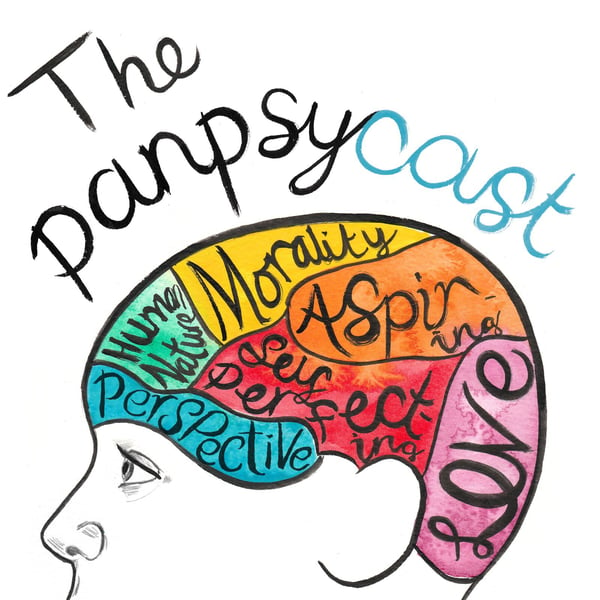Episode 124, ‘Narrative Critique’ with Rachel Fraser (Part II – Further Analysis and Discussion)
The Panpsycast Philosophy Podcast
Jack Symes | Andrew Horton, Oliver Marley, and Rose de Castellane
4.8 • 604 Ratings
🗓️ 3 December 2023
⏱️ 42 minutes
🧾️ Download transcript
Summary
Two people can encounter the same state of affairs – a crime, a book, a building – and yet their attention, interests, and emotional responses can be radically different. The perspectives of others are closed off from us, and our perspectives are closed off from them … that is until we share our stories. In recent years, social and political movements have utilised the power of storytelling by encouraging the sharing of first-personal accounts. For example, the #MeToo movement and #ShoutYourAbortion campaign encouraged women to share their experiences of sexual violence, harassment, and abortion in order to challenge the ideologies that allow sexism and misogyny to exist. According to Dr Rachel Fraser, these narratives play an indispensable role that can never be performed by theory and statistics.
In this episode, we’ll be speaking to Dr Fraser, Associate Professor at the University of Oxford, about how personal narratives allow us to challenge social scripts, refocus our attention, and alter the perspectives that, ultimately, shape our lives and institutions. For Fraser – who specialises in a range of fields, including epistemology, aesthetics, philosophy of language, and social and political philosophy – narratives offer a window into our lives and reveal moral truths that serve to critique dangerous ideologies and overcome injustice. Silencing ourselves and others is a surefire way to perpetuate inequality; if we want to bring about a better world, then we must learn to speak and listen.
This episode is produced in partnership with the Aesthetics and Political Epistemology Project at the University of Liverpool, led by Katherine Furman, Robin McKenna, and Vid Simoniti and funded by the British Society of Aesthetics.
Contents
Part I. Disrupting Ideology
Part II. Further Analysis and Discussion
Transcript
Click on a timestamp to play from that location
| 0:00.0 | Just a reminder, we may be referencing some sensitive content throughout this episode. |
| 0:05.2 | Thank you again for listening. We hope you enjoy the show. |
| 0:07.4 | Pan, Pan analyses and discussion. |
| 0:29.1 | In our previous instalment, Rachel, we spoke about how personal narratives can fulfill the role of challenging ideological perspectives and scripts, especially those relating to sexual violence. |
| 0:39.8 | In the paper, you write, to have acquired a feminist standpoint is not sufficient to believe |
| 0:44.3 | things like, quote, women are not men's inferiors, or sexism is pervasive and harmful. |
| 0:51.0 | Something more is required. To remind listeners, could you tell us what more you had in mind? |
| 0:56.7 | So this relates neatly to the discussion we had earlier about ideology and choice points when it |
| 1:03.8 | comes to ideology. So what I did there is I drew a distinction between doxastic conceptions of |
| 1:09.4 | ideology and non-doxastic conceptions of |
| 1:12.2 | ideology. So if you have a non-doxastic conception of ideology, you think that ideology involves |
| 1:17.9 | social practices and cognitive gadgets other than belief. So here are two cognitive gadgets that I am |
| 1:26.1 | particularly interested in. Cognitive gadget, one, a perspective. Cognitive gadget two, a script. So we've already talked a bit about scripts. A script is roughly a schematized representation of a scenario. So most of us have scripts for going to the dentist or going to a restaurant, |
| 1:47.9 | but we also have scripts for grief and for sexual violence. So we rely on these schematized |
| 1:55.0 | representations when we do things like encode memories, when we do things like interpret the testimony of others. |
| 2:03.2 | The other cognitive gadget that I'm interested in is a cognitive gadget that I call a |
| 2:07.2 | perspective. So a perspective is an interlocking suite of dispositions. The dispositions I'm |
| 2:15.7 | particularly interested in are attentional dispositions, inquisitive dispositions. The dispositions I'm particularly interested in are attentional dispositions, |
| 2:19.8 | inquisitive dispositions and affective dispositions. So I'll run through each of those in turn. |
| 2:27.3 | So attentional dispositions, two people have different attentional dispositions when they are given the same scene or they're given the same input. |
| 2:39.0 | So you and I might read the same book or look at the same building, but our attention might be drawn to different features. |
| 2:45.9 | So an art historian and an architect looking at a Victorian building will typically focus their attention |
... |
Please login to see the full transcript.
Disclaimer: The podcast and artwork embedded on this page are from Jack Symes | Andrew Horton, Oliver Marley, and Rose de Castellane, and are the property of its owner and not affiliated with or endorsed by Tapesearch.
Generated transcripts are the property of Jack Symes | Andrew Horton, Oliver Marley, and Rose de Castellane and are distributed freely under the Fair Use doctrine. Transcripts generated by Tapesearch are not guaranteed to be accurate.
Copyright © Tapesearch 2025.

